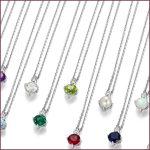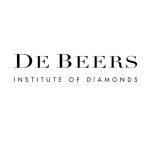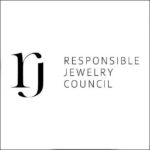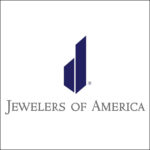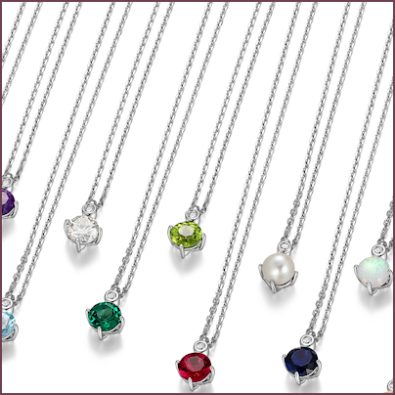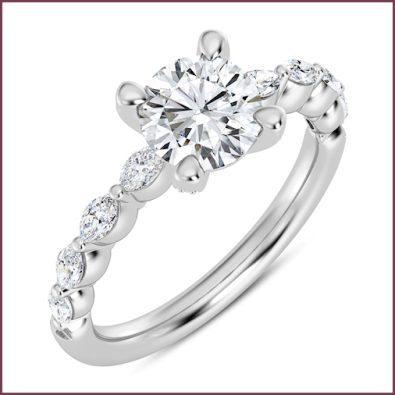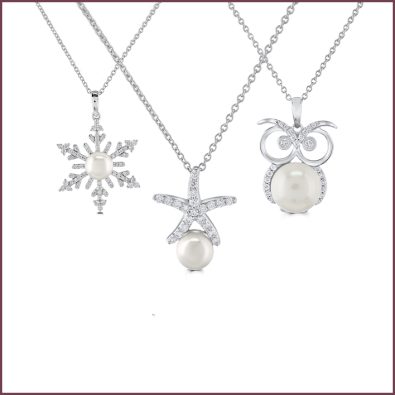Engaging a New Generation
More than 70% of weddings today are millennials. Born between 1979-2000, the oldest millennials are 37, youngest 15, so they’ll be the majority wedding-consumer for quire some time. Millennials are the largest generation alive, one-third of the world population, 33% larger than the second biggest, Baby Boomers.
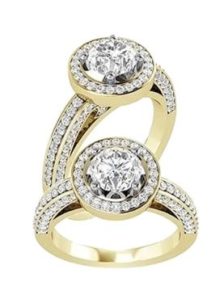 Millennials approach the world differently than the generations before them. What worked in the “bridal” marketing even 10 years ago won’t work today, says Liene Stevens, author and wedding consultant for Think Splendid.
Millennials approach the world differently than the generations before them. What worked in the “bridal” marketing even 10 years ago won’t work today, says Liene Stevens, author and wedding consultant for Think Splendid.
“The first generation to grow up in a digital age, millennials have a different brain on a microcellular level, which is why ‘what’s always been done’ no longer works,” she says. “The digital attachment is real. 53% of millennials would rather give up their sense of smell than their smartphone. Research is a way of life. They do their homework, reading some 14 reviews before making a purchase.”
According to the Knot 2015 Jewelry & Engagement Study, 67% of brides begin researching rings before getting engaged, using their mobile devices to browse styles (43%), share ideas with fiancé (35%), and research designers and retailers (29%). Men invest five months to research, visiting about five retailers and examining more than two-dozen rings before landing on “the one.”
To gain credibility with millennials, jewelers must go beyond their own website and Facebook to share news online. “Getting published on blogs gives millennials more places to look when researching.”
Messaging
Millennials approach the world differently. Stevens cites 75% had a working mom and consider women and men equals; and 65% of grooms are actively involved in their wedding planning. “Using it’s all about the bride or clueless groom stereotypes in marketing is a turn off.”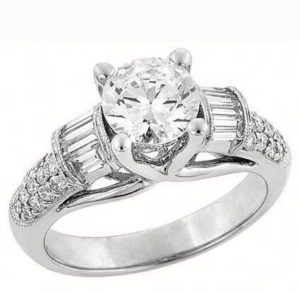
Millennials prefer messages that reinforce family and community, she says. They value time over money. They define themselves by their ability to connect with others, not by what they own. They appreciate authenticity with little patience for insincerity. Millennial classrooms emphasize teamwork, so peer feedback is key. 40% of millennials grew up in single parent homes, so they’re waiting longer to wed. 65% live together before marrying. 80% believe they’ll only be married once.
One in five millennial marriages are interracial, so couples expect to see diversity in marketing because they live it. That also goes for same sex couples. Six in 10 consumers agree “brands that show same-sex couples in ads are being appropriately inclusive,” cites a 2014 survey by JWT for BuzzFeed.
Matthew Perosi-Doughty with Jewelers Equality Alliance says typical ads in the category hold couples to hetero-normative standards; there’s a lack of ads to attract men, and not just gay men; and current advertising has a limited view on how to solicit women. “Advertising creates influence, inclusive ads educate.”
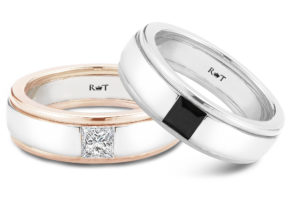 Rony Tennenbaum, New York designer of the Art of Contemporary Love, partner with EMA Jewelry, says same-sex couples are looking to jewelers to help them navigate this new journey. The difference between gay and straight weddings is they lack tradition, reminds Bernadette Smith of 14Stories and the Gay Wedding Institute, New York, especially among gay men. She says female same-sex couples are more likely to follow traditional wedding protocols.
Rony Tennenbaum, New York designer of the Art of Contemporary Love, partner with EMA Jewelry, says same-sex couples are looking to jewelers to help them navigate this new journey. The difference between gay and straight weddings is they lack tradition, reminds Bernadette Smith of 14Stories and the Gay Wedding Institute, New York, especially among gay men. She says female same-sex couples are more likely to follow traditional wedding protocols.
Language matters. Be inclusive in all your marketing. “Instead of bride and groom consider: brides and grooms, couples, sweethearts, newlyweds, spouses, partners, wedding couple,” suggests Smith. Take a vocabulary inventory and update your verbiage. Tennenbaum says it’s vital to be visible, in-store and online, that LGBT couples are welcome.
Accessibility
Jewelers must have a multi-channel approach to win millennials. “Retailers need vendor partners that they can leverage for technology, inventory and fulfillment to meet the quick response desire from today’s consumer,” says Jay Gerber for the diamond manufacturer, WR Cobb, East Providence, Rhode Island.
Gerber advocates an online experience that mimics the store. “Many customers want a non-intimidating online experience first to do research and customize. Having a Design Your Own platform is a must. Provide 3D images and diamond magnification, so customers can see a retailer’s styles and stones before going in store.” He says it’s critical online shopping is adaptable to all smart devices.
Customization
Customization is everything to millennials. Stevens describes it as a need, not a luxury. Whether they created the ring with a jeweler or made custom changes to an existing design, 45% told the Knot they added personal elements.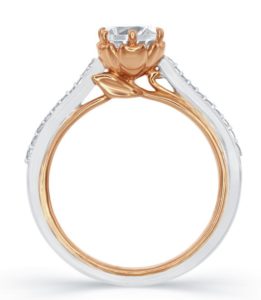
“You may not be able to customize everything, but you must present opportunities,” says Grant Mobley, vice president Simply Diamonds/JewelMark, New York. He advises jewelers offer some kind of customization, be it options in stone and metal use, or design details.
A big part of customization is personalization, reminds Cora-Lee Colaizzi, director of marketing and catalogs and senior merchandiser Quality Gold, Fairfield, Ohio. “Having an inscribed message and date placed inside the band keeps the sentiment close—perfect to make commodity rings special.”
Top Trends for 2016
Designer Phyllis Bergman with Mercury Rings, division of Interjewel Group, New York, in her top bridal picks for 2016 captured what many manufacturers report, including strong demand for halos, two stone, two tone, unique solitaires, multi-row inserts and stackable bands.
According to the Knot, the halo is the trendiest engagement ring setting, tripling from 7% in 2011 to 22% in 2015. “The halo offers a great value proposition and consumers love the look,” tells Jeffrey Cohen, vice president of sales, KGS Jewels, New York. He cites the cluster/multi-stone settings strong as well.
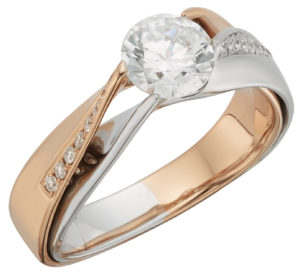 The challenge with the halo is differentiating in a sea of similarity, says Kevin Reilly, vice president of the Platinum Guild International USA. The solution: large halos, double halos, halos of swirling metal, and halos of different gem shapes, sizes and colors.
The challenge with the halo is differentiating in a sea of similarity, says Kevin Reilly, vice president of the Platinum Guild International USA. The solution: large halos, double halos, halos of swirling metal, and halos of different gem shapes, sizes and colors.
Many say two-stone has created excitement that has not been seen in the market for a while. “The fact that major manufacturers and retailers teamed up for the marketing campaign is significant,” says Colaizzi. “The advertising in the marketplace has developed the idea that in the two-stone product, one diamond symbolizes love and the other friendship should benefit everyone.” Simple and sincere, the messes resonating with engaged couples.
Demand is diminishing for traditional solitaires. “Millennial bridal customers are looking for more than just a center centric solitaire,” says Katherine Rosenberg-Pineau, vice president of creative for Leo Schachter Diamonds, New York. “They’re looking for a ring with design and uniqueness.”
Engagement ring mounting styles that feature adornments with pave stones or textured accents are nabbing attention. Laura Rubin, vice president merchandising/product development for KP Sanghvi, New York sees resurgence in non-framed engagement rings, classic styling with gallery view details; and more interest in color accents, even if hidden. Although 84% of brides received white diamonds, says the Knot, 8% opted for color stones, up from 6% in 2013. Color is a key trend, not only in gem use, but also metals, notably rose gold.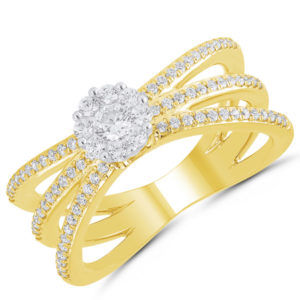
Demand is up for fancy gem shapes. “Not just princess and cushion cuts, but emerald, pear and marquises,” says Rosenberg-Pineau. “We’re infusing new designs with a focus on fancies in our LVE Bridal collection. We’ve had a lot of success with princess and cushion and look to add more.” Although the Knot ranks round No. 1 for 49% of brides, 33% say they’d prefer different shapes.
In wedding rings, there’s a strong trend for fashion bridal bands, specifically the multi-row, stacked look, says Valerie Fletcher, vice president of design and product development, Tache USA, New York. “We’re doing well with multi-row, micro-pave bridals, especially twisty, crossover looks. Retailers say our stackables sell in twos to frame engagement rings. Insert rings are also strong in similar styling.”
For men, many feel the category lacks options, notably in diamond proposal rings. “There are plenty of rings for women, but little selection for men,” notes Perosi-Doughty of his own difficulty finding rings with his husband. “Jewelers asked why they’d carry that, stating no one would buy it.” According to the Gay Wedding Institute, 66% of women purchase engagement rings, 19% of men—a percentage expected to rise with more marketing and selection.
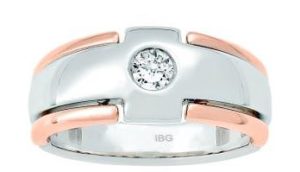 There’s great opportunity for jewelers to do more, says Jonathan Goodman Cohen, for the men’s jewelry manufacturer IB Goodman, Newport, Kentucky. He cites sales up in gold and diamond bands. “We’re doing a very good business in men’s diamond rings, with demand growing at higher price points and greater total carat weights—up from ¼ to ½ to ½-1 carat.”
There’s great opportunity for jewelers to do more, says Jonathan Goodman Cohen, for the men’s jewelry manufacturer IB Goodman, Newport, Kentucky. He cites sales up in gold and diamond bands. “We’re doing a very good business in men’s diamond rings, with demand growing at higher price points and greater total carat weights—up from ¼ to ½ to ½-1 carat.”
